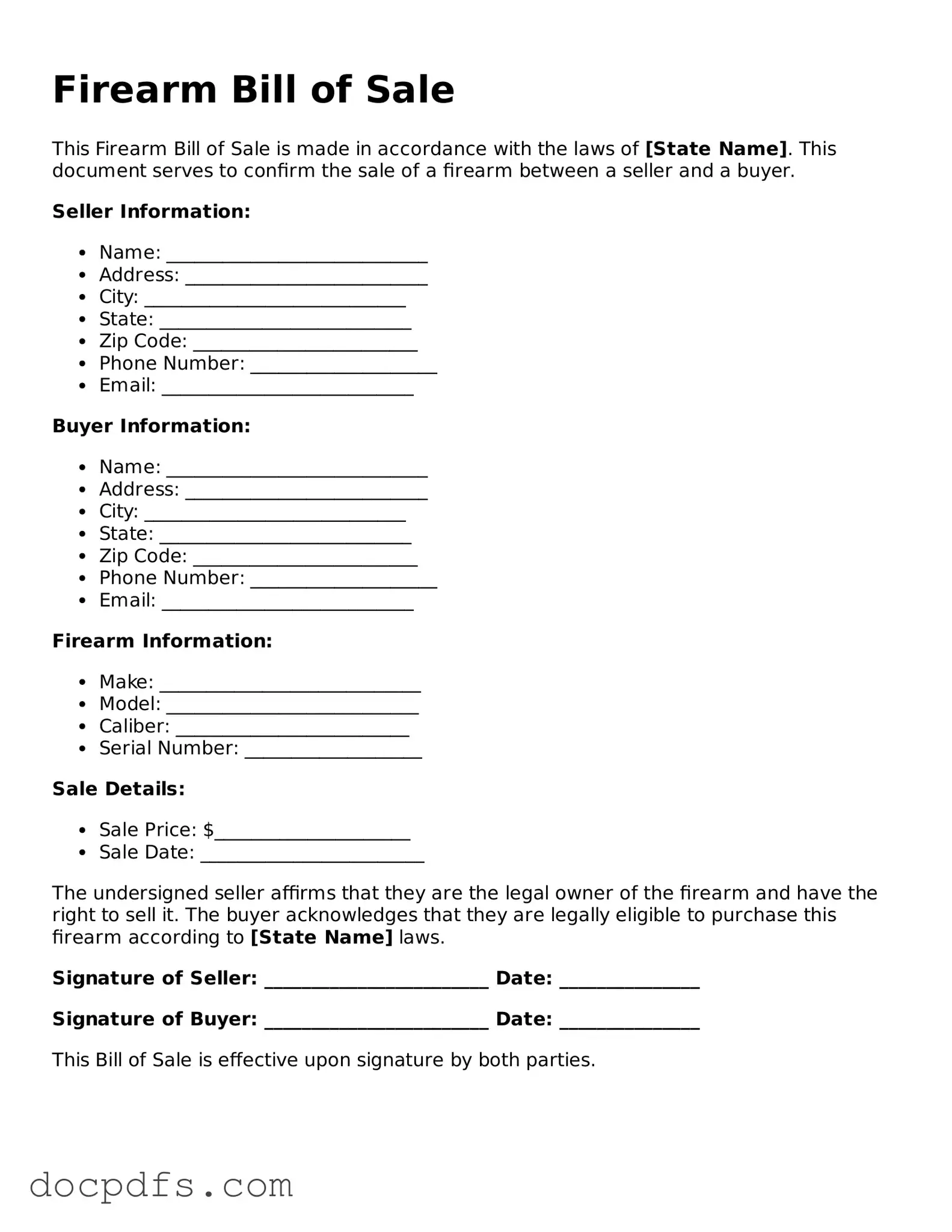What is a Firearm Bill of Sale?
A Firearm Bill of Sale is a legal document that records the sale or transfer of a firearm between two parties. This form includes essential details about the buyer, seller, and the firearm being sold. It serves as proof of the transaction and can help protect both parties in case of future disputes.
Why is a Firearm Bill of Sale important?
This document is important for several reasons:
-
It provides legal proof of ownership, which can be crucial if questions about the firearm's origin arise.
-
It helps ensure compliance with state and federal laws regarding firearm sales.
-
It can protect both the buyer and seller from liability in case the firearm is used in a crime after the sale.
A standard Firearm Bill of Sale usually includes:
-
The names and addresses of both the buyer and seller.
-
The date of the transaction.
-
Details about the firearm, including make, model, caliber, and serial number.
-
The purchase price of the firearm.
-
Signatures of both parties to confirm the transaction.
Do I need to have the Firearm Bill of Sale notarized?
Notarization is not typically required for a Firearm Bill of Sale, but it can add an extra layer of security and legitimacy to the document. Some states may have specific requirements, so it’s advisable to check local laws to determine if notarization is necessary.
Are there any legal requirements for selling a firearm?
Yes, there are legal requirements that vary by state. Generally, sellers must ensure that the buyer is legally allowed to purchase a firearm. This may involve verifying the buyer's age, residency, and background. Some states also require a background check to be completed before the sale.
Can I sell a firearm to someone from another state?
Selling a firearm to someone from another state can be more complicated. Federal law requires that the transfer of firearms across state lines be conducted through a licensed dealer. It’s crucial to understand both federal and state laws to ensure compliance when selling to out-of-state buyers.
What happens if I lose the Firearm Bill of Sale?
If you lose the Firearm Bill of Sale, it may complicate matters regarding proof of ownership. However, if you have other documentation or evidence of the transaction, such as bank statements or emails, these may help establish ownership. It is advisable to keep a copy of the Bill of Sale in a safe place to avoid future issues.
Can a Firearm Bill of Sale be used in court?
Yes, a Firearm Bill of Sale can be used in court as evidence of the transaction. It can help establish ownership and the terms of the sale. However, the document must be properly completed and signed by both parties to hold up in legal proceedings.
